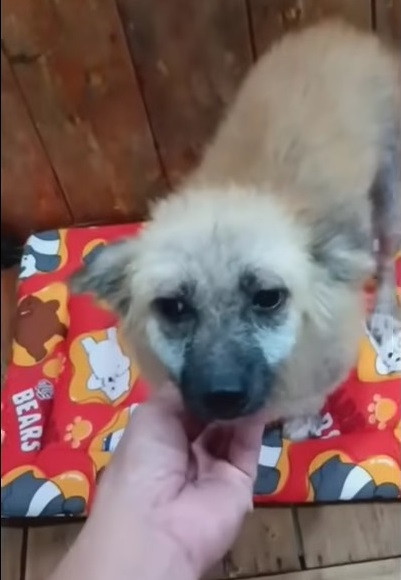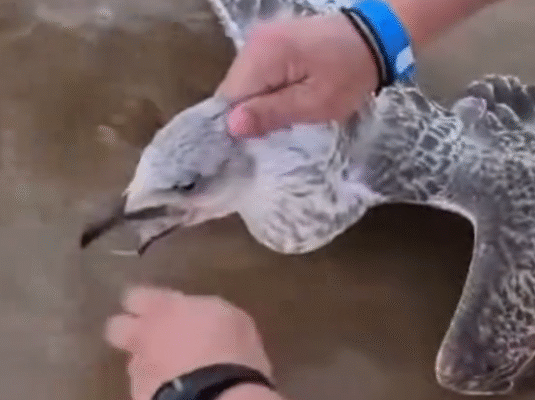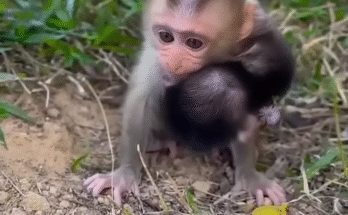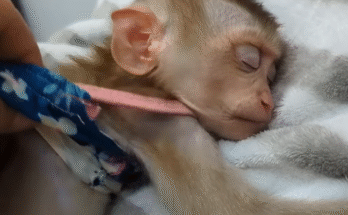It was a breezy afternoon by the seaside, the kind where the waves crash lazily on the rocks and the scent of saltwater floats in the air. My friends and I had taken a break from our usual routine and decided to spend the day near the cliffs just outside the little town of Windmere. The plan was simple: picnic, photos, and a chance to breathe in some nature. What none of us expected was that our relaxing outing would turn into a rescue mission.
We were setting up our picnic blankets and joking about who forgot the mustard when we heard a strange, frantic flapping nearby. At first, we assumed it was just a flock of gulls fighting over food—something we’d seen countless times. But this was different. The flapping didn’t stop, and it had a desperate, erratic rhythm to it.
Curious, we followed the sound down a narrow trail that curved around a large rock formation. And then we saw it.

A seagull was struggling violently on the ground, its wings beating in every direction. Its mouth was open wide, eyes panicked, throat visibly bulging. For a second, none of us moved. We were stunned. It was obvious the bird was choking—but on what?
“Is it dying?” someone whispered behind me.
“I think it is,” I said, my voice caught between fear and urgency. The seagull flailed again, tumbling sideways into a patch of seaweed, its beak scraping the sand. My instincts kicked in, but so did the doubt. I had no experience with birds, let alone a wild one in distress.
Still, we couldn’t just walk away.
“Let’s help it!” my friend Lana said, stepping forward. She always had a soft spot for animals. Once, she spent two hours rescuing a crab stuck in a soda can. Now, she crouched down cautiously, hands raised like she was approaching a scared cat.
“Wait,” I said, pulling her back. “What if it pecks you? It’s panicking.”
“We can’t just watch it die,” she snapped.
Fair point.
We surrounded the bird in a loose semi-circle, trying not to frighten it more than it already was. Its chest heaved, and it kept gagging, twisting its head back and forth as if trying to dislodge something. That’s when I spotted it—a shiny piece of plastic lodged deep in its throat. A candy wrapper maybe, or a bit of packaging from someone’s snack.
Suddenly, everything made sense. The poor bird had mistaken garbage for food. It was choking on a piece of our carelessness.
“Plastic,” I said aloud. “It’s stuck.”
Lana reached into her backpack and pulled out a pair of tweezers—of all things, she had them for her eyebrows. “Will these work?”
I took them carefully and inched closer. The seagull thrashed again but was clearly weakening. Its wings slowed. It was losing the strength to fight.
“Someone hold its wings,” I said, my voice shaking. “Gently. Don’t hurt it.”
My friend Sam held the wings down softly with a towel, murmuring calming words. I knelt in the sand and took a deep breath. “It’s okay, birdie… hang in there.”
I leaned in and saw the crumpled piece of plastic deeper than I expected. I hesitated, heart pounding. One wrong move, and I could injure it worse—or miss the chance to save it.
I reached in slowly with the tweezers. The gull gagged. I flinched.
“Almost there,” Lana whispered beside me.
I adjusted the grip. The plastic was slick with saliva and wedged in tightly. I gave a firm but gentle pull.
For a second, nothing happened. And then—slurp!—it came free.
The bird wheezed, coughed, and lay still.
We all held our breath.
Then, with a sudden jerk, it blinked and let out a raspy cry. A few seconds later, it flapped its wings and stood, trembling but alive.
We stepped back, giving it space. The seagull looked at us, almost confused, as if trying to understand what had just happened. Then, as if nothing had ever happened, it took a few waddling steps and lifted into the air.
We burst into cheers. It wasn’t just relief—it was pure joy. We had saved a life.
That moment changed the tone of the entire day. We went back to our picnic spot, but no one could stop talking about what had just happened.
“How did we even manage that?” Sam laughed. “I mean, none of us are vets!”
“Just lucky,” I said. “And maybe a little brave.”
Lana looked out at the sea, her smile fading slightly. “It shouldn’t have happened, though. That plastic… it came from people like us.”
We all fell silent. She was right. That shiny wrapper could have been tossed aside by anyone—thoughtlessly discarded, forgotten. But for that seagull, it was nearly deadly.
It made us think. The beach was beautiful, but even as we looked around, we began to notice bits of trash hidden in the grass, tangled in the rocks, drifting with the tide.
After we packed up, we spent another hour just picking up litter—plastic straws, bottle caps, broken sunglasses, snack wrappers. It was sobering to realize how much there was.
On the way home, we looked up how to report injured wildlife and how to safely help birds in the future. We learned about rescue organizations, local rehabilitation centers, and what to keep in a “beach emergency kit.”
The experience stayed with me long after that day. Every time I go back to the shore, I carry a small bag and gloves, just in case. I always keep an eye out—not just for beauty, but for responsibility.
Because sometimes saving a life comes down to being in the right place at the right time… and being willing to act.
That day, a choking seagull reminded us that even small efforts matter. That wildlife needs more than admiration—it needs protection. And that while we may not be experts, we can still make a difference, one life at a time.



